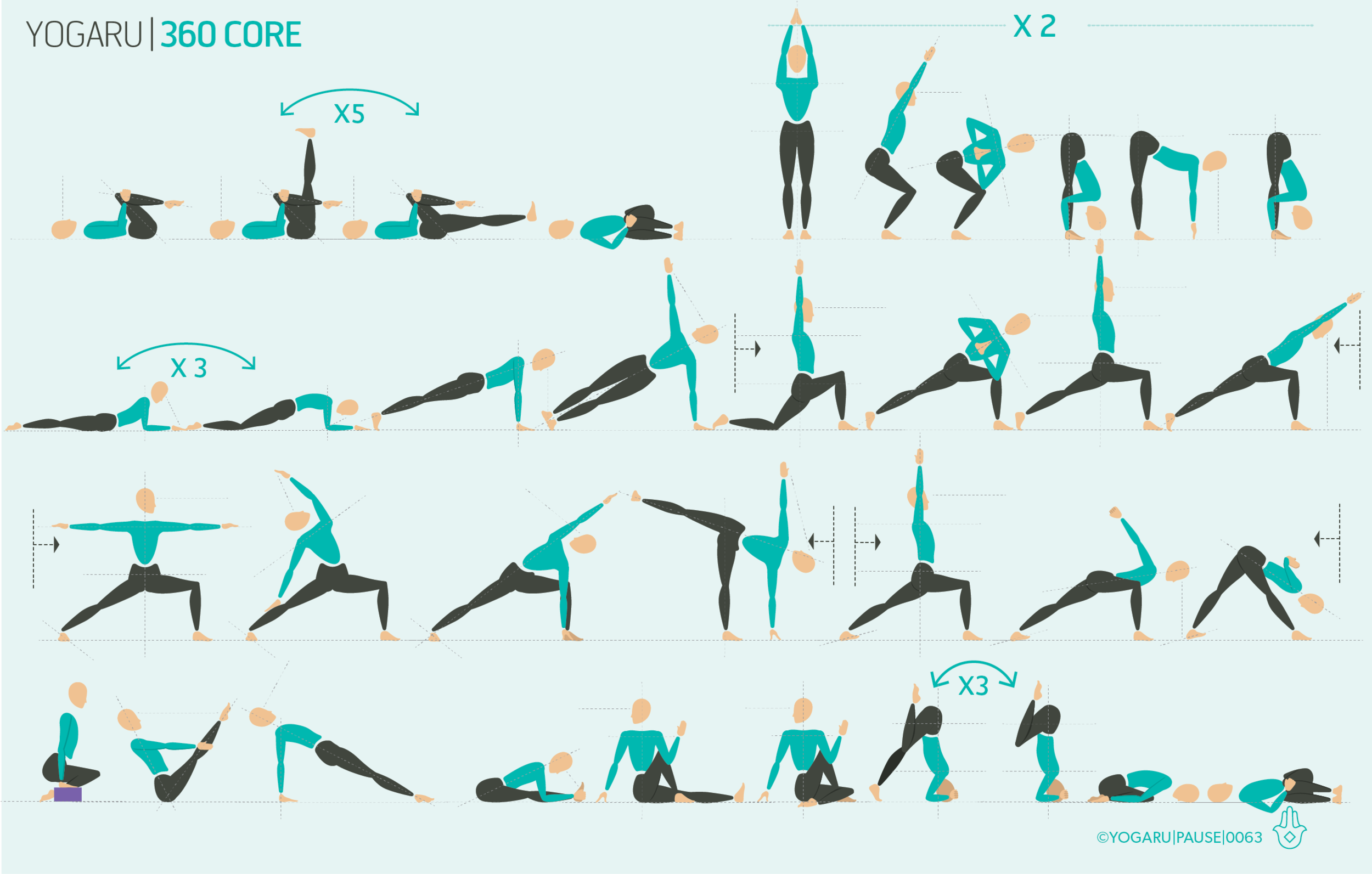THE ESSENTIAL CENTRE
The concept of ‘the core’ is a fascinating topic. If you peel away the idea of ‘core’ as a fashion item to be chased after, and look at it from a functional point of view you see it for what it actually is – an amazing anatomical feat of nature that plays a crucial role in physical and mental health. Just like an apple core, our core is the centre of our being – the powerhouse that gives stability to our spine, support to the organs, and mobility to the pelvis as a source of all movement.
HOW THE CORE WORK?
The core is intrinsically linked to the health of our spine. When the core is weak the back needs to work harder to hold us up and facilitate movement. When the core is tight or overworked it pulls the pelvis into a posterior backwards tilt and puts additional strain on the lumbar spine. To understand the core it is important to have a very simple understanding of the main muscle groups involved, and remembering the core does not just comprise of the ripped six pack summer holiday accessory, it wraps around to support you 360 degrees.
To break it down very simply – the transversus abdominis are the containment sheath that wrap around the core like a corset which support the organs and assist in posture; the internal and external obliques run diagonally up and down the side body and are mainly responsible for lateral side bends and twists; the rectus abdominis are the outermost layer of muscle and run from the pubis to the bottom of the sternum, they flex the spine and stabilise the pelvis; the quadratus lumborum do the opposite and extend the spine into backbends. The iliopsoas, which is considered ‘the core of the core’, is one of the biggest muscles of the body, and is responsible for hip flexion and movement. It is the only muscle that connect the upper and lower body, and is vital for all movement. The pelvic floor and the diaphragm are also considered crucial parts of the upper and lower core – making the core not only 360, but a full three dimensional top, bottom and sides shape.
EXPLORING THE CORE IN YOUR PRACTICE
What we are looking for in our practice is an evenly distributed strong and supple core that facilitates safe supported movement. The first step is to connect to the core, then work out what you need to do to engage the muscles, and in turn stabilise the spine and inner organs.
ALIGNMENT CUES
This sequence works the full range of the core. As you move through your practice consider the three steps of connect, engage and stabilise the core. The peak pose is Salamba Sirsasana/Headstand prep which requires strong core engagement and mobility.
Print out the below tips, along with the sequence, and explore the full spectrum of your core:
Set your yoga mat up short end to the wall. From all fours place your elbows down directly under your shoulders and interlace your fingers. Place your knuckles about an inch away from the wall.
Place the crown of your head on the ground using the interlaced fingers as a support wall. Lift your knees up and walk your toes in towards your elbows until you find the support of the wall against your back.
Press down into your forearms, lengthen up to your shoulders and hug your upper arms in. Lift your right leg up with a bent knee and draw it in to your chest. Squeeze into the back of your knee and reach your toes towards your buttocks.
Stack your hips over your shoulders and strongly draw your belly in towards your spine. On an exhale, slowly lift your left leg up with a bent knee and reach your toes towards your buttocks.
Keep your knees deeply bent and as slow as you can bring your feet back down onto the ground pausing at the point where you feel the work coming from your deep core muscles.
To save the images for personal use click and hold down the image until the ‘save image’ option appears; on Mac hold down ‘control’ and click the image to get the option box; on PC right click on the image to get the option box. Scroll down in the ‘option box’ and click ‘save image’.
Ruth Delahunty Yogaru

